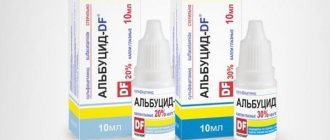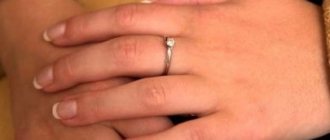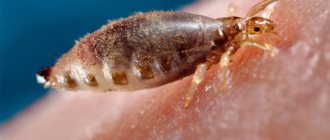One of the categories associated with diseases of the skin of the feet includes cracked heels, the causes and treatment of which are a headache not only for women, but also for the stronger half of humanity - men.
Is this really a serious skin disease, or is this problem only cosmetic in nature? Let's try to figure it out in this article how to get rid of cracked heels. And Valeria Konstantinovna Skutskaya, a dermatologist at the Moscow Center for Cosmetic Dermatology, will help us.
– Hello, Valeria Konstantinovna! With the beginning of the summer season, when the warm season sets in, people put on light summer shoes, and in reality, a problematic condition of the feet appears, which requires some adjustment. Cracked heels, what is it, what are the causes, and what needs to be done?
- Hello. Yes, indeed, this is a big problem that requires appropriate adequate treatment. Today, our Center for Cosmetic Dermatology is a multidisciplinary medical institution that not only studies various skin pathologies, but also treats them. One of the areas is cracked heels, the causes of which may indicate various diseases. Before deciding to choose the appropriate treatment method, you need to understand the causes of this skin condition. Most often, cracked heels appear due to:
- vitamin deficiency, that is, the body lacks vitamin A;
- fungal penetration into subcutaneous pores;
- improper foot care, that is, insufficient personal hygiene;
- uncomfortable shoes that do not provide sufficient ventilation or have synthetic insoles;
- low blood circulation intensity;
- extra pounds of weight, which is one of the key problems of skin deformation on the heels of the feet;
- diabetes mellitus and so on.
However, in addition to the above reasons, the formation of cracks is a confirmatory factor in more serious dermatological and/or hematological diseases that require more thorough diagnosis. In any case, if your skin is unhealthy, qualified assistance from specialists is required.
Causes of dry skin on feet
Dry skin on the feet occurs as a result of lack of moisture. Heels crack due to the following phenomena:
- Circulatory disorders. Improper or insufficient blood flow means that the epithelium does not receive enough nutrients, or they are distributed unevenly.
- Wearing excessively tight clothing: compression of blood vessels and soft tissues leads to slow blood flow and insufficient blood supply to the areas compressed by the tissue.
- The use of low-quality cosmetics and unsuitable personal hygiene products.
- Incorrect skin care.
- Stress.
- Cold weather.
- Insufficient intake of vitamins.
- Skin diseases (onychomycosis, psoriasis, eczema).
- Pathologies associated with thyroid dysfunction (diabetes mellitus).
- Allergy to medications.
- Parasitic lesions (helminthic infestation, etc.).
You can get rid of an anomaly only if you influence the source of its occurrence. If the appearance of unpleasant symptoms is caused only by external causes, the provoking factor must be completely removed for cure.
Folk remedies for getting rid of cracked heels
There are many folk recipes that soften the skin, disinfect open wounds and prevent the appearance of cracked heels. We have selected the most effective ones.
Honey.
This is one of the most effective remedies for fighting inflammation. Honey and bee products heal painful wounds and perfectly soften the skin. You can make foot baths with propolis decoction. But the most effective use is to smear the cracks with natural fresh honey, cover with waterproof paper (tracing paper) and bandage it. Leave this mask on overnight, and in the morning your legs will be unrecognizable – they will look like children’s.
Starch.
To heal large cracks, you need to make starch lotions or baths. To do this, boil the potatoes, but do not drain the water. When it cools down a little, you need to steam your feet in this water. If you don’t want to wait for the potatoes to cook, add a couple of tablespoons of prepared starch to warm water. Before the bath, wipe your feet with an alcohol-containing solution. After the bath, treat the cracks with salicylic ointment. You can make a compress of raw potatoes for your heels at night.
Onion.
This is another excellent remedy for combating cracks. The skin must first be steamed and prepared. Then we remove one layer of the “shirt” from the onion, remove the inner transparent film, and then slightly scrape the onion skin from the inside. It should, as it were, give juice in order to better penetrate the wound. Then we tightly tie the onion skin to the painful heel and leave it overnight.
Milk apple.
For this recipe you will need one apple and a glass of milk. The apple must be peeled and cored, cut into small pieces. Pour a glass of milk over the apple and simmer over low heat for half an hour. Then the apple pulp needs to be pulled out and mashed to a puree. The prepared product should be applied to the heels while warm. Leave for about an hour, then rinse with warm water and lubricate your feet with baby cream.
Cabbage.
This is an excellent remedy for treating wounds, congestion and compactions. The cabbage must first be mashed with a rolling pin on a board. Then apply large sheets to the heel and bandage. Leave overnight.
Sour cream.
A tablespoon of melted butter should be mixed with the same amount of fat sour cream. The prepared mixture should be rubbed into the heels until part of the product is absorbed. Leave the mask on for an hour, then rinse your feet and apply cream.
Soap.
Soap heals cracks well. Economics is most suitable, 72%. You need to rub the cracks, especially the edges. Leave the soap overnight and rinse your feet with warm water in the morning.
Aloe + egg.
You need to choose an old plant that is more than three years old. Pluck a few leaves and place in the freezer for several hours. Then defrost and chop the aloe leaves, mix with the white of a chicken egg. Apply the mask to your heels and leave for about an hour. Then remove large pieces of the mask, but do not rinse your heels. In the morning, wash off the remnants of the prepared product and apply generously with rich cream.
Causes of cracked heels
Microcracks that appear on the epithelium not only create an unpleasant external effect of unkemptness, but are also an ominous signal that a person should pay attention to his health. Dry skin and cracking of the skin facilitate the penetration of many pathogenic bacteria into the body, infection with which is fraught with long-term infectious diseases and the appearance of severe complications. Before applying cosmetics or ointments to cracked heels, you need to reliably establish the cause of the deviation.
Lack of proper hygiene
Cracks are provoked by pollution, lack of nutrition, and an excess of dead epithelial cells. In this case, washing your feet daily with cool water (this will increase blood flow to the extremities), using pumice to remove the old hardened layer, and using softening and moisturizing creams and ointments will help get rid of the pathology.
Accelerated keratinization of the skin of the feet
The abnormally rapid formation of the stratum corneum on the feet is caused by insufficient levels of vitamins A, E, zinc, and iron in the skin.
As a result of the lack of these components, epithelial cells begin to actively divide and do not have time to exfoliate. The skin loses its elasticity and firmness, becomes dry, rough, and cracks appear on it. Its protective function decreases, it loses water and becomes permeable to many pathogens. Due to the influence of this factor, the ability to fully absorb retinol is lost, which leads to anemia and oxygen starvation.
Excessive hygiene procedures to remove the stratum corneum from the heels
The appearance of an unpleasant symptom is often caused by the daily use of scrubs, pumice stones, hair removal with a razor, and steaming.
In order not to dry out the skin of your feet, it is recommended to carry out such cosmetic procedures no more than once a week.
Wearing the wrong shoes
Tight, uncomfortable shoes and high heels lead to sweaty feet and the appearance of calluses and corns on the soles.
Due to compression of the blood vessels of the limb, blood circulation is disrupted, problem areas do not receive enough beneficial microelements.
All this creates a favorable environment for the appearance and proliferation of fungal bacteria. The upper epithelial layer dries, cracks, and becomes coarser.
Increased load on the legs
Increased load on the limbs caused by excess weight (due to obesity, pregnancy), active sports training, non-compliance with sleep and rest patterns lead to the fact that the soles sweat, become rough, and crack.
Help to reduce pressure on your heels:
- wearing comfortable shoes in everyday life, selected to fit, made from natural high-quality materials;
- use of orthopedic insoles;
After a hard day of work, it is necessary to provide your legs with proper rest.
Dry skin
This phenomenon is observed due to:
- pregnancy: carrying a child increases the load on internal organs and limbs, leads to increased blood sugar levels, dry epithelium;
- hormonal changes: menopause in women provokes improper functioning of blood vessels, insufficient supply of nutrients to the soft tissues and skin of the lower extremities.
Internal influencing factors
In addition to external influences, the causes of deep cracks in the heels can be diseases of the internal organs and problems in the functioning of the body. It is known that developing diseases can have various effects on a person's appearance and manifest themselves in the form of changes in skin color, hair loss, weight loss, dryness and cracking of the skin. Possible causes of cracks in the skin of the feet and heels include:
- elevated blood sugar levels;
- metabolic disease;
- lack of vitamins and important minerals;
- problems with the thyroid gland;
- diseases of the stomach and intestinal tract;
- psoriasis, dermatitis and other skin diseases;
- abnormalities in kidney function.
Diabetes and anemia can also be accompanied by cracking and dry skin. Also, cracks in the legs can occur due to problems with blood vessels and capillaries, or due to poor circulation. In such a case, blood circulates poorly through the veins and may not reach the heels and feet, which is manifested by various skin diseases and changes in skin color.
Diet can have a significant impact on the condition of the skin not only on the face and body, but also on the legs, causing dryness and cracked skin. In this case, ordinary seasonal vitamin deficiency may also be the cause of cracked heels. Skin problems arise due to a lack of vitamins A and E in the body, which are responsible for moisturizing it. In addition, this side effect can also occur after the birth of a child and during breastfeeding. In such a case, taking an additional vitamin complex may help eliminate the problem.
Methods for healing cracks
Traditional and folk medicine knows how to cure cracked heels. Before using any product, you should consult your doctor.
Medicines
Medications can effectively influence the source of pathology. They moisturize and nourish the epithelium, have a healing and softening effect. To avoid side effects, they must be used strictly following the instructions and recommendations of a specialist.
Moisturizing and nourishing cosmetic ointments
If your heel is cracked, it needs to be treated properly. Effective remedies for cracks can be purchased at the pharmacy. The most popular ointments and creams for cracked heels are:
- “Zorka”: helps moisturize the epidermis, serves as a source of additional nutrition for the skin, and has a healing effect. Contains vitamins, glycerin, chamomile extract.
- “Forest Power”: enriches epidermal cells with oxygen, rejuvenates them, saturates them with collagen.
The advantage of these drugs is the absence of side effects.
Wound-healing pharmaceutical foot creams
In pharmacies you can buy remedies for cracked heels that have a healing and restorative effect. Among the popular ones:
- “Radevit”: reduces itching, accelerates cell regeneration, resists inflammation, fights cracks and peeling.
- “Bepanten”: ointment and cream are used to treat cracked heels, relieve inflammation, relieve pain, itching, and prevent the formation of microcracks and ulcers. They contain wax.
- “Flexitol” has a complex effect: heals microcracks, eliminates inflammation, softens the epidermis.
Salicylic and zinc ointments will be useful for heels. They treat many skin diseases, get rid of wet psoriasis plaques, and produce a drying effect.
Softening creams and ointments
The following pharmacological products are effective against cracked heels:
- “Healer”: softens hardened epithelium, treats calluses and corns.
- “Juniper”: this cream for cracked heels contains petroleum jelly, softens the skin, restores its microflora, heals deep cracks and ulcers.
- With sea buckthorn: softens the skin, fights inflammation, heals wounds and cracks.
- "Gevol": relieves pain, moisturizes and softens rough heels.
- “Green Pharmacy” with walnuts: restores the epidermis, makes it softer.
Electric appliance Scholl Velvet Smooth
All of the above methods are good if they are used in combination, that is, to treat cracks, it is recommended to use both steam baths and home compresses. In this case, it is necessary to periodically carefully remove the layered rough tissue from the surface of the foot. An ordinary foot file or pumice stone can handle this task, but today there are many alternative and safer methods for removing rough skin.
The Velvet Smooth electric file from the Scholl brand has established itself as an excellent device for delicate foot treatment. With this machine you can quickly and efficiently deal with even the hardest areas of keratinized epidermis. Moreover, before using an electric device, there is no need to pre-steam the foot, and this will significantly save your time . Electric tools must be used dry. The Scholl file acts very gently on the feet, carefully removes dead cells, delicately treats existing cracks in the heels, polishing the surface of the skin.
If you have such an assistant, you will forever forget about foot problems, since a hygienic pedicure with Velvet Smooth will take very little time and effort. See for yourself by watching a video about how to treat legs with a Scholl electric file. If you want to have such a “useful friend” in your home arsenal, you will find the best offers and cool promotions with gifts in the online store. Rest assured, care and attention can make your feet flawless!
Prevention
To prevent the occurrence of cracked heels, it is recommended to:
- Regularly care for your feet using pumice stones.
- Do cleansing peels (no more than once a week).
- Use nourishing cream, apply moisturizing gels and balms (twice a day, morning and evening before bed). Before applying ointment for cracked heels, you should study the instructions for use of the product in detail.
- Take foot baths with sea salt. You can add essential oils and tea tree extract to the water.
- There are natural products, fresh vegetables and fruits, and in the autumn-winter period you can take vitamin complexes on the recommendation of a doctor.
- Prevent limb injuries and flat feet.
- Wear casual, comfortable shoes and socks made from natural, breathable fabrics. In warm and hot weather, it is better to choose open shoes.
- Timely identify and treat all somatic diseases.
Good for skin and massage. It improves blood circulation, cell nutrition, metabolism, wounds heal faster and hurt less. For the same purpose, you can purchase special massage mats for your home and use them for daily gymnastics.
Treatment
If the first signs of pathology are present, the following measures should be taken:
- Checking shoes, replacing them if necessary with more comfortable ones, preference should be given to genuine leather. In summer, you should wear closed-back sandals and avoid walking barefoot.
- Using a moisturizer will help get rid of peeling; when treating minor defects, you should use chlorhexidine and healing ointments. The procedure should be carried out in the evening; regular soap is suitable for processing.
- Refusal of daily use of pumice and various belongings. Peeling should be carried out no more than twice a week, the skin should be restored.
- Adequate nutrition, you should drink at least two liters of water daily.
- Unloading the feet, avoiding constant standing, getting rid of excess weight.
If there is no effect from the above measures, severe discomfort, or difficulty walking, you should consult a doctor. It should be remembered that cracks in the legs can be a sign of more serious diseases; any disease requires proper treatment. The specialist will conduct the necessary diagnostics and prescribe therapy.











